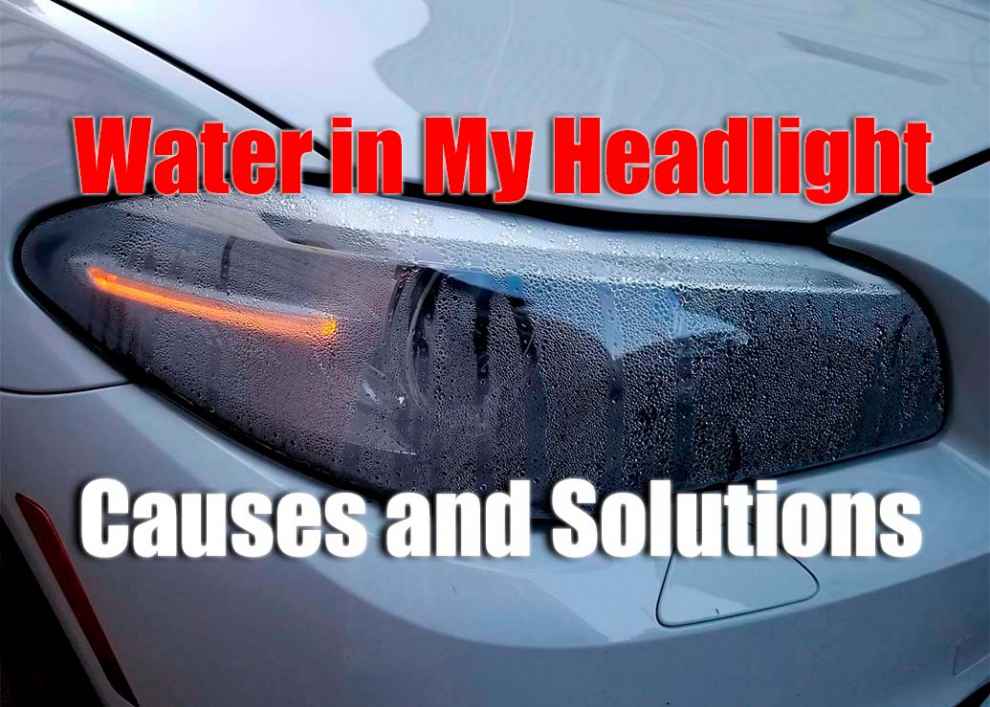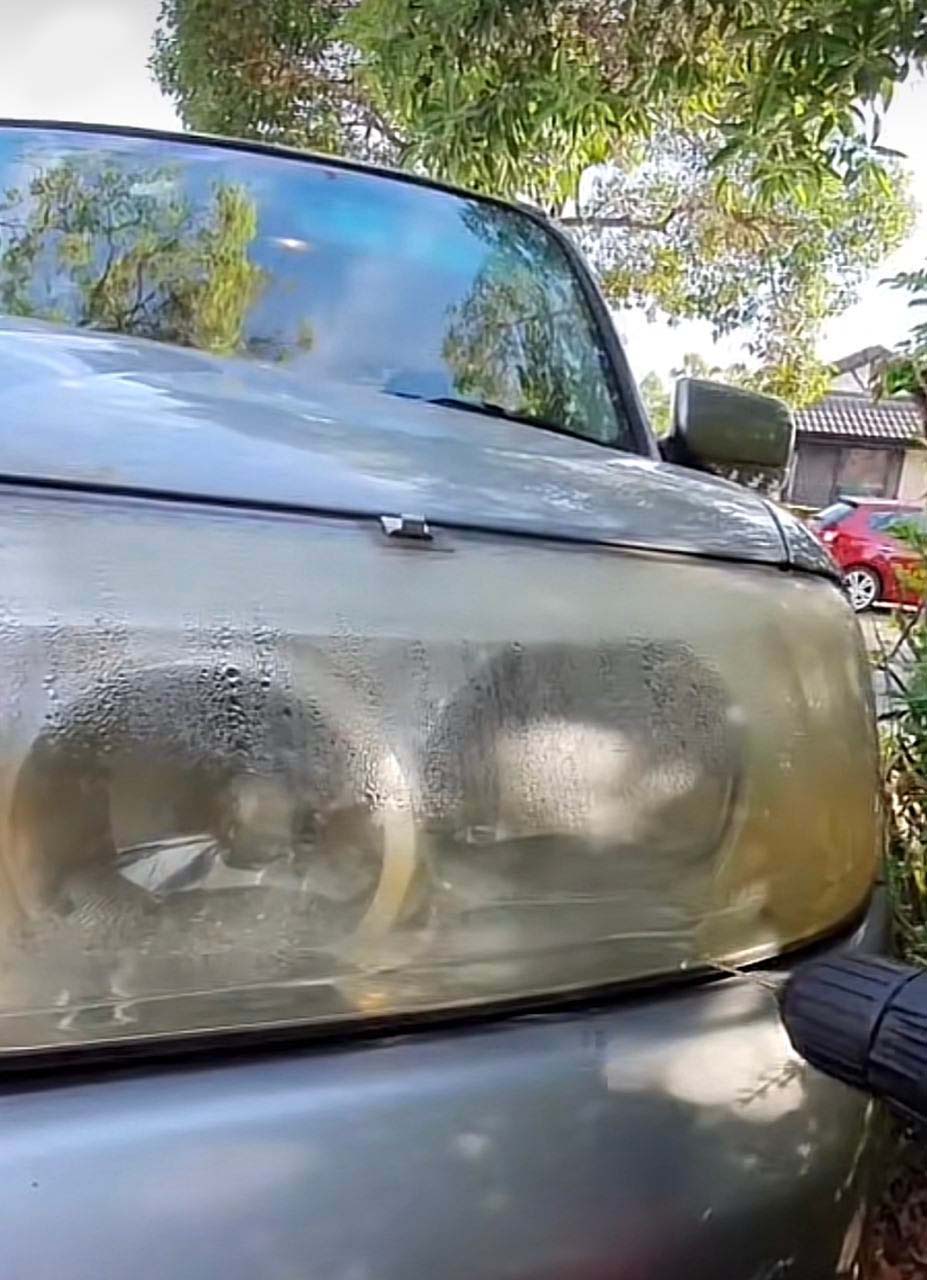Having water in your headlights can be a major problem – not only does it limit visibility, but if left unaddressed, it can eventually lead to rust and corrosion in the headlight housing. In this comprehensive guide, we will look at the causes of water in your headlight, ways to prevent it, and how to repair any damage caused by water. Read on for all the information you need!
Causes of Water in Car Headlight
Water in a Jeep headlight can occur for various reasons, and it’s essential to identify the cause to prevent further damage and ensure proper functionality. Some common causes of water in Jeep headlights include:
-
Damaged or Worn Seals: The headlight assembly has rubber or foam seals to keep water out. Over time, these seals can deteriorate, crack, or become dislodged, allowing water to seep into the headlight.
-
Cracked or Broken Headlight Lens: Any cracks or fractures in the headlight lens can create openings for water to enter the assembly. This damage may result from debris impacts, road hazards, or accidents.
-
Poor Sealing During Maintenance: After replacing bulbs or conducting other maintenance work on the headlights, improper reassembly or poor sealing can leave gaps that allow water to infiltrate.
-
Off-Road Driving: Jeeps are often used for off-road adventures, and driving through water crossings or deep puddles can force water into the headlights if the seals are not adequately secured.
-
Environmental Factors: Extreme weather conditions, such as heavy rain, snow, or frequent temperature changes, can cause condensation to form inside the headlight, leading to the appearance of moisture.
-
Age and Wear: As the Jeep ages, the seals and gaskets in the headlight assembly may degrade, reducing their effectiveness in keeping water out.
-
Manufacturing Defects: In some cases, manufacturing defects or inadequate quality control during the production of the headlight assembly can lead to subpar sealing, making it susceptible to water leaks.
Preventing Water in Your Headlight
The best way to avoid water entering your headlight is by regularly checking for cracks or gaps around both lens and housing seals and worn-out weather stripping around the edges of headlights. If any signs of wear are spotted, then they should be fixed as soon as possible using silicone caulk or polyurethane foam tape strips (for door sealing). Additionally, regular cleaning of headlights with a soft cloth dampened with soapy water should help remove dirt and debris that may have accumulated over time, thus preventing further accumulation from occurring near seals leading into lights. Also read about Best Halo Lights for Jeep Wrangler.
How to Fix Water in Your Headlight
Fixing water in a Jeep headlight requires a systematic approach to effectively identify and address the cause. Here’s a step-by-step guide to resolving water ingress in your Jeep’s headlight:
-
Inspect the Headlight: Inspect the assembly for any visible cracks, damage, or loose seals. Look for signs of water droplets or condensation inside the lens.
-
Dry the Headlight: If you notice water or condensation, dry the headlight thoroughly. You can use a hairdryer on a low heat setting or place the vehicle in direct sunlight with the headlight facing up to aid in moisture evaporation.
-
Check the Seals: Inspect the seals and gaskets around the headlight assembly for any signs of wear, damage, or improper positioning. Replace any worn or damaged seals with new ones, ensuring a proper watertight fit.
-
Seal the Headlight: If you suspect the existing seals are insufficient, apply a thin layer of automotive silicone sealant along the edges of the headlight lens. Be careful not to obstruct any vent holes or necessary openings.
-
Reassemble the Headlight: Once the headlight is dry and properly sealed, reassemble the components carefully. Ensure that all parts are aligned correctly and securely fastened.
-
Perform a Water Test: After reassembly, perform a water test by spraying water on the headlight from various angles. Check for any signs of water leakage to verify the effectiveness of the repairs.
-
Address Other Causes: If the issue persists, consider other potential causes, such as damaged lenses, cracks in the housing, or faulty electrical connections. Address these issues accordingly or seek the assistance of a professional mechanic if necessary.
-
Regular Maintenance: To prevent future water ingress, regularly inspect the headlight seals and perform routine maintenance on your Jeep’s headlight assembly.
Conclusion
Water in a headlight is a serious issue that could lead to dangerous driving conditions and costly repairs. Taking the right preventive and repair measures ensures that your Jeep headlights are working correctly and free from water ingress. Regular maintenance, replacing worn seals, and repairing damaged lenses are some of the most effective ways to prevent water from entering your headlight assembly. With proper care, you can be sure your headlights will provide reliable performance for years.

 Cracked or Broken Headlight Lens: Any cracks or fractures in the headlight lens can create openings for water to enter the assembly. This damage may result from debris impacts, road hazards, or accidents.
Cracked or Broken Headlight Lens: Any cracks or fractures in the headlight lens can create openings for water to enter the assembly. This damage may result from debris impacts, road hazards, or accidents.
Add Comment